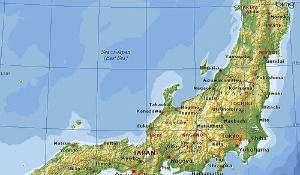Nuclear meltdown worries continue in Japan
As the situation at the Fukushima Daiichi nuclear power plant hit by Friday’s earthquake and Tsunami, worsens, there are fresh fears of nuclear meltdown. Explosions have damaged reactor 1 and 3 and now the Japanese media are reporting dangerously low water levels at reactor 2. In the UK, Chris Huhne has said the British nuclear industry must learn any lessons that may come from the incident.

 Japanese officials have confirmed that the fuel rods in reactor 2 at the Fukushima Daiichi nuclear plant could have been fully exposed due to low water levels, causing more concern over nuclear meltdown.
Japanese officials have confirmed that the fuel rods in reactor 2 at the Fukushima Daiichi nuclear plant could have been fully exposed due to low water levels, causing more concern over nuclear meltdown.
Combined with a second explosion at the Fukushima nuclear plant, reactor 3, hit by Friday’s earthquake, this latest development has caused fresh fears of a reactor meltdown. In the UK, Chris Huhne has said the British nuclear industry must learn any lessons that may come from the incident.
The latest explosion, which took place at 11:01am local Japan time (10.01pm GMT), at reactor three followed an explosion at reactor one on Saturday. The second explosion injured six workers and four soldiers.
Despite Japanese authorities reassuring the public that the reactors remained intact, despite significant damage to the outer buildings, there are fears that the situation is continuing to worsen.
In a last attempt to cool the system, seawater was pumped into the reactors as a coolant, the first time this method has been used in the nuclear power industry’s history.
However, the heat from the fuel rods caused the coolant water in reactor 1 to become superheated split into hydrogen and oxygen on Friday, and as the built up water vapour pressure was released hydrogen escaped and caused the first explosion, and subsequently the second.
Officials have admitted that a partial meltdown may have taken place in reactor 1 and possibly reactor 3. Yukio Edano, Japanese Cabinet Secretary told Channel 4 news: “It must have happened in the reactor vessel so we can’t confirm anything yet, but we assume there was a meltdown. There is also a possibility there was a meltdown in the third reactor.”
The force of the 9.0 magnitude earthquake knocked the power out at the station, stopping the nuclear reaction, and the back-up generators, which kick in to pump coolant around the reactor and prevent overheating, were damaged in the Tsunami that followed.
More than 200,000 people have been evacuated as the exclusion zone around the power station has been extended from 10km to 20km. At least 22 people are now said to be undergoing treatment for radiation exposure, and as many as 190 people could have been exposed.
Officials have said they will be distributing potassium iodide pills as a precaution against any increased risks from exposure.
If the cooling fails, risks of a meltdown, where the heat melts the fuel rods and could cause significant damage to the reactor itself and the release of high levels of radiation, is still possible.
Japan is very reliant on nuclear power and planned power cuts in many cities have been considered, in order to deal with the loss of energy from both this plant and others.
The Fukushima 2 power plant nearby Fukushima 1 has a 10km exclusion zone surrounding it. A state of emergency was also announced at the Onagawa nuclear power station amid concerns of increased levels of radiation.
The Japanese nuclear industry has undergone criticism this weekend, saying the disaster has been foreseen for many years, particularly with warnings against placing a nuclear power station in a volatile earthquake area.
The incident has also caused criticism across the World, with anti nuclear protests taking place in Germany, France and other countries.
In the UK, Chris Huhne, Secretary for Energy and Climate Change has said a full UK investigation into any lessons that can be learnt from the accident will take place.
He said: “We take this incident extremely seriously even though there is no reason to expect a similar scale of seismic activity in the UK. I have called on the Chief Nuclear Inspector, Dr. Mike Weightman for a thorough report on the implications of the situation in Japan and the lessons to be learned. This will be prepared in close cooperation internationally with other nuclear regulators.
“It is essential that we understand the full facts and their implications, both for existing nuclear reactors and any new programme, as safety is always our number one concern.”
Experts are trying to reassure the public that this incident will not turn into a “Japan’s Chernobyl”. The differences between the plants used in Japan at Fukushima, and that used in Chernobyl, make a nuclear explosion much less likely, and the Japanese reactors are contained within a sealed container unlike that at Chernobyl.
Image: Danny 13 | flickr






